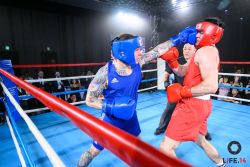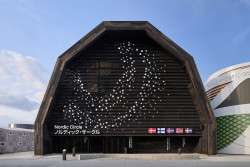
December 3, 2024
The Colorful and Healthy Art of Japanese Pickle Recipes
The history, recipes and health benefits of Japan’s pickles
By Sharnie Fenn
There are no better Japanese pickle recipes than those of my Japanese grandmother! She serves these handmade pickles at breakfast, lunch, dinner and sometimes even as an accompaniment to tea. Japanese pickles recipes make for crunchy, colorful, flavorful vegetables, and they offer many health benefits.
How Are Japanese Pickles Made?
Tsukemono are pickled vegetables and are a beloved staple in Japanese cuisine. Tsukemono translates to “pickled things,” and are typically vegetables but can also include fruit and even flowers. They are preserved through fermentation or pickling—vegetables are soaked in a mixture of salt, vinegar or rice bran, which acts as a natural preservative.
This process not only extends the shelf life of vegetables but also transforms their textures and flavors, making them tangy, sweet or savory, depending on the pickling method. Tsukemono is usually served alongside a main dish as a side or as a palate cleanser.
The History of Japanese Pickles
Pickling vegetables in Japan dates back thousands of years, with archaeological evidence suggesting salted vegetable peels existed as early as the Jomon era (14,000–300 BC). Pickling with salt and fermentation was widespread globally, and the oldest known agricultural text from China, Qimin Yaoshu (6th century), describes salt-pickling methods—considered the world’s earliest written record of pickling. This knowledge likely spread to Japan and Korea, introducing more refined methods of lactic fermentation through Buddhist monks in the 700s. During the Edo period, tsukemono was commercialized and became a staple of the Japanese diet, especially with the rise of nukazuke, a fermented rice bran pickle that gained popularity in home kitchens. From salt fermentation to rice bran beds and vinegar solutions, a variety of methods emerged across regions, each developing its own styles and recipes using locally available vegetables and seasonings.
More than a century and a half later, tsukemono are everywhere from supermarkets and convenience stores to upscale restaurants, chain and family-owned establishments. In recent years, more people have revived the tradition of homemade pickling. They’re cheaper to make it at home, and pickled foods are full of health benefits. Plus, it’s fun!
Health Benefits of Japanese Pickles
Probiotics
Tsukemono contains beneficial bacteria that aid in digestion and support gut health.
Vitamins and Minerals
The pickling process preserves the nutrients in vegetables, providing a good source of vitamins A, C and K, plus essential minerals like calcium and iron.
Low Calorie
Tsukemono are typically low in calories, making them a healthy addition to meals.
Antioxidants
Many pickled vegetables are rich in antioxidants, which help fight inflammation and protect against chronic diseases.
Types of Pickled Vegetables
A wide variety of vegetables can be pickled; each bringing unique flavors and textures to the table. Commonly pickled vegetables include:
Kyuri no asazuke
These cucumbers make for a refreshing and hydrating snack and you’ll see them often at yatai (food stalls) and at natsu matsuri (summer festivals).
Takuan
Bright yellow daikon radish is slightly sweet and makes for an addictively crunchy pickle that’s great with rice.
Umeboshi
These sour pickled plums are great with rice or used as a popular filling inside onigiri (rice balls).
Nasu no shoyuzuke
These eggplants are pickled in soy sauce, giving them a rich, savory flavor.
Gari
These coral-colored staples of sushi restaurants are great for cleansing the palette between sushi plates, and also aid digestion.
My Grandma’s Japanese Pickle Recipes
My grandmother has made her own tsukemono for as long as I can remember. Stacks of plastic containers and colorful jars had a permanent position on the top shelves of her pantry. She has been kind enough to share some of her favorite Japanese pickle recipes that are easy to make at home!
1. Kyuri no asazuke

Ingredients (serves 5 people)
Cucumber (1kg)
Cucumbers will shrink while pickling so medium or thicker cucumbers are preferable
Salt (70g)
Granulated sugar (200g)
Vinegar (90ml)
Instructions
1. Place uncut, whole cucumbers in a pickling container (or large pot or bowl.)
2. Sprinkle salt on each layer of cucumbers.
3. Pack and squish cucumbers together tightly to minimize gaps.
3. Place a drop lid (otoshibuta) or a plate on top of the cucumbers and add weight to press down on the cucumbers to remove excess liquid.
4. Let the cucumbers sit overnight under the weight.
5. By the following morning, the cucumbers should have released enough liquid to fill about half the container, and should appear wilted.
6. Drain the cucumbers and transfer them into a new, large container.
7. Next, sprinkle granulated sugar and pour vinegar on the cucumbers, then seal the container.
8. Let them sit overnight in the fridge.
9. The granulated sugar should have dissolved into a liquid by the following morning. Turn the cucumbers over and continue to do this at least once a day for a week.
10. After a week of pickling, slice the cucumbers to the desired thickness and enjoyed.
11. Store in the fridge for up to 6 months. However, ensure the cucumbers remain submerged in the pickling liquid and transfer the cucumbers to a smaller container or ziplock bag for storage when necessary.
2. Hakusai no asazuke

Ingredients
Hakusai (Chinese cabbage) (300g)
Salt (6g)
Kelp (3g)
Soy sauce (to taste)
Sesame seeds (to taste)
Instructions
1. Prepare salt. My grandmother recommends using a ratio of 2% of the vegetable’s weight. In this instance, 6g of salt.
2. Cut off the base of the hakusai. Wash the hakusai thoroughly and cut into bite-sized pieces (about 3-4cm wide recommended). Place the hakusai into a ziplock bag.
3. Add salt and kelp into the bag for umami flavor. Close the ziplock bag and massage the contents.
4. Once thoroughly mixed, place the mixture into a container or pan and close, using a drop lid or weighted lid. (Recommended weight is 2-3 times the weight of the cabbage.)
5. Let the container sit in the fridge for 3-4 hours.
6. After 3-4 hours, the cabbage will release water, become wilted, and be ready to eat.
7. When serving, remove the desired amount of cabbage from the container and squeeze out the liquid. For extra flavor, drizzle soy sauce or sprinkle sesame seeds on top.
3. Shibazuke

Ingredients
Cucumbers (3)
Eggplant (1)
Ginger (1 piece)
Salt (4 teaspoons)
Red shiso leaves (30-40 pieces)
Vinegar (2 tablespoons)
Light brown sugar (2 teaspoons)
Instructions
1. Cut the cucumbers into bite-sized pieces.
2. Cut the eggplant into bite-sized pieces. Next, soak the eggplant in water to remove bitterness, then drain well
3. Slice the ginger thinly.
4. Place the cucumber, eggplant, and ginger pieces into a large bowl, add 2 teaspoons of salt, and mix. Rub the salt into the vegetables thoroughly.
5. Place a weighted lid (or plate with weight) on the vegetables and let them sit for a day to pickle.
6. Remove the stems from the red shiso leaves and wash them thoroughly. Sprinkle 2 teaspoons of salt on the leaves and rub thoroughly. Squeeze any excess liquid from the leaves.
7. Mix vinegar and sugar with the shiso leaves in a separate bowl. The mixture should become a beautiful, vibrant red color.
8. Combine the shiso mixture and pre-pickled vegetables in the original container. Next, place a weighted lid on the container to squeeze the vegetables down and let them pickle in the fridge for a day until the vegetables turn red.
9. For a more intense flavor and color, let the vegetables pickle for longer.
Which of these Japanese pickle recipes are you going to try first? If you loved these pickle recipes, our Fenn’s grandma also shows you how to make “Suiton” – a hearty bowl of dough balls, crunchy vegetables and tender meat stewed in a flavorful broth. “My grandmother likes to cook this for my family on chilly nights, and I usually asked for seconds, at least four times,” says Fenn.







